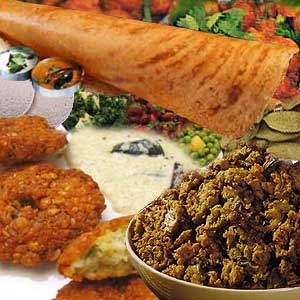
Indian food is famous for its opulent varieties and richness and is extensively thought to be one of the tastiest cuisines in the world. The flavor and whiff of Indian recipes are conspicuous by its presence and you can find an Indian restaurant in virtually any part of the planet.
India is a vast country and its cuisines are segregated into 4, based on the four regions. In this article we'll attempt a brief discussion on the south, north, east and west Indian cuisines.
Lets start with north Indian cuisines. Fruits and veggies are a ample in North India and the region has extreme climates - chilly winters - good monsoons and intense summers. Central Asia has had a great influence on North Indian culture and food. Nuts and dry fruits are utilized a lot and there is always a generous dash of cream, yogurt and ghee in the sweet North Indian dishes. North Indian dishes have a number of very good vegetarian dishes that makes full use of the plentiful vegetables found in this region . North Indians do not consume much rice and as such rice takes a backseat in the cuisines from this region. Bread, naans, rothis, parathas and kulchas are more common. Spices like red chillies, Coriander, turmeric and garam masala are extensively used in North Indian cusines. Some of the popular North Indian cuisines are Punjabi Chole, Tandoori Chicken, Lassi Patial and Dal Makhani.
Southern India has a hot and sultry climate and with many of the states in this region being coastal there is ample rainfall during monsoons. This coupled with a fertile soil helps in producing abundant fruits and vegetables. Rice is the staple food in this region with bread and rothis being supplementary. Rasam and Sambhar are the two most popular soups that are mixed in rice and they form the integral part of any meal in South India. The food in some southern states like Andhra Pradesh tends to be very pungent and piquant. Commonly used spices in South Indian Curry leaves, chillies, tamarind and mustard. Some examples of the common south Indian snacks are dosa, vada, idli and payasam. Dosa is the Indian version of a thin pancake that is made from rice and black lentils. Carbohydrates and proteins are abundant in dosa and it is mostly eaten for breakfast. Idli is made from steaming battered rice and black lentils and is akin to a thick pancake. Both idli and dosa are served with soups like sambhar and chutney.
The Mongolians and Chinese have had some influence in the food styles and recipes of East Indian Food. The desert East Indian recipes are a real treat and the variety of sweet dishes in this region is huge. People here like to steam and fry their food and the staple food is rice. The spices used here are similar to that in south India and like North Indian recipes lot of milk and yoghurt is used in plenty of East Indian recipes. Fish is consumed a lot in East India and there are lots sea food recipes in regions such as Kolkata. The popular vegetarian dishes in this region are momos, thupka and sandesh amongst others.
Crops are not as abundant in West India as in the other regions, but that does not limit its range of dishes. Rajasthani dishes are spicy while Gujurat is renowned for its delicious sweet dishes. West Inhdian cusines are based around both rothis and rice and so there is no clear staple food in this region with both rice and rothis being consumed equally well.
This is just a basic article on Indian Recipes and we have hardly touched the surface. For further information on south Indian recipes please click South Indian Recipes. The web page has some Good South Indian Food recipes and videos.
If you are a fitness freak then you might also want to take a look at Benefits of HGH
Flavor of Indian Recipes